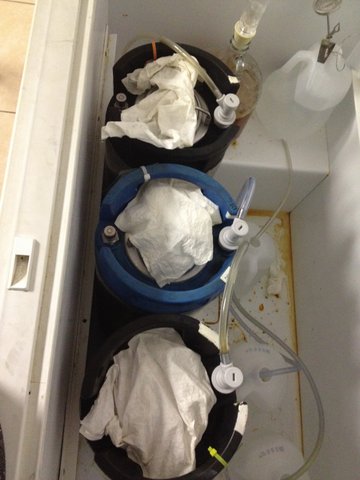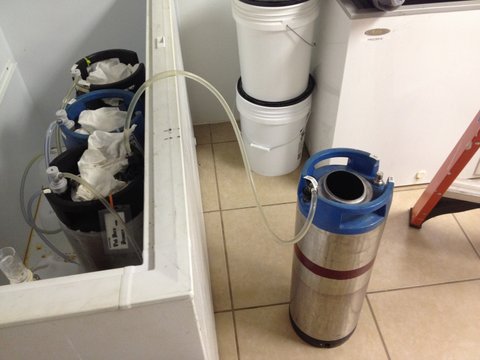Pickngrin
Well-Known Member
when i ferment in a corny,I take out the dip tube. and drop it back in to transfer. this way I dont have week old crud to clean out of it.
Excellent idea -- thank you!

when i ferment in a corny,I take out the dip tube. and drop it back in to transfer. this way I dont have week old crud to clean out of it.
OK you experts, how do you keep the krausen from coming out all around the lid of the keg?
If I cant get this under control, I wont have a choice but to use carboys, I really dont want to be cleaning a mess in the freezer evertime I brew some beer.
ARRGGHHH
Josh
Subscribed! Awesome thread.
I was toying with the idea of a plastic conical, but a friend that works for Mr. Beer mentioned that they use them alot and are problematic. The other option was corneys.
So if I have this right, I can do something like this:
1. Cool, dump into corny. Let settle for 1-2 hours, serve off the trub (1-2 qts)
2. When Primary finishes, put on about 30psi and serve off the yeast. (straight, uncut dip tube).
3. Add Isenglass (my favorite) and let sit for a week.
4. Serve off sediment, and transfer to serving keg.
Is that about right? Assuming I'm carbing with C02.
Another question too. I want to go to a spunding valve and natural carbing in the keg. Where would that fit in the process?
I'm thinking I need to do that before fining?












There is a thread about fermenting under pressure in Sanke's. That thread talks about the usage of a Spunding valve to regulate the pressure. Other wise I think your steps sound fine. Although I bet you don't need to go all the way to 30 psi to server off the yeast.
https://www.homebrewtalk.com/f13/closed-system-pressurized-fermentation-technique-44344/
https://www.homebrewtalk.com/wiki/index.php/Closed-system_pressurized_fermentation
There is very little foam with fermcap.
I put it in right before the boil; there is no foam up during the boil, no foam during oxygenating, and no foam at fermentation. I fill mine to about 1" from the top. No changes to the keg.
It will still blow off some so I use a second keg; hook the OUT from the primary to the IN of the sacrifice keg (little bit of sterilized water on the bottom of the sacrifice keg). Insert a QD in the sacrifice keg IN so the gas can escape and now I have a yeast collector. I use this clean yeast for my next batch.
Moving forward; I plan on replacing the sacrifice keg with a clear water filter housing and using a spunding valve to do a pressurized fermentation.
2.5" isn't that bad; so in that case I would fill 3" from the top instead of 1" from the top.
If my objective was to not have any blowoff whatsoever, I would add a few extra drops in the fermenter and not fill it so high. But I like to collect a little blowoff, I just don't want it to get out of hand.




Rob,
thats exactly what happened to mine, I hooked the blow off on the out side and it purged all 5 gallons out. Someone suggested to remove the dip tube and thats what I have been doing. I remove the dip tube and hook the blow off there. When I go to transfer I just put the poppet and dip tube back in the post, and transfer using co2.
I also go through a filter into the serving keg, makes it nice and easy to clean up.